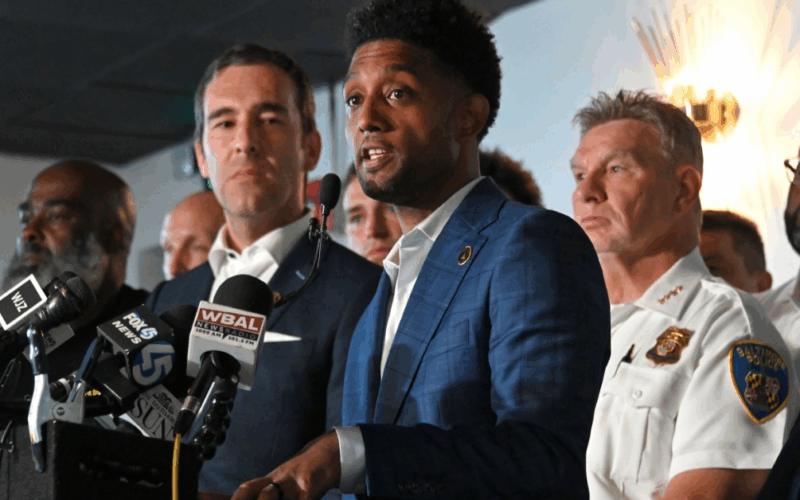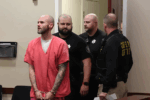Baltimore, MD – Baltimore City continues to experience a remarkable decline in violent crime rates in 2025, marking one of the safest years the city has seen in over five decades. Despite ongoing political tensions between Governor Wes Moore and former President Donald Trump regarding public safety strategies, data shows significant improvements across multiple crime categories.
Record Low Homicide and Shooting Rates in 2025
As of August 2025, Baltimore has recorded 91 homicides and 218 nonfatal shootings, reflecting a striking 29.5% decrease in murders and a 21% decline in nonfatal shootings compared to the same timeframe last year, according to data from Mayor Brandon Scott’s Office. This figure represents the fewest homicides through the first eight months in over 50 years.
August stood out as an exceptionally safe month, with just 7 homicides and 22 nonfatal shootings, notable because August is historically one of the deadliest months in Baltimore.
- Homicides decreased by 29.5% compared to last year.
- Nonfatal shootings dropped by 21%.
- Auto thefts declined by 32%.
- Robberies reduced by 26%.
- Carjackings fell by 21%.
Mayor Brandon Scott Credits Collaborative Efforts and Innovative Strategies
Mayor Scott expressed gratitude towards various local and federal agencies contributing to these historic crime reductions. In a public statement, he highlighted the cooperative efforts of the Baltimore Police Department (BPD), the Office of Neighborhood Safety and Engagement, and federal and state partners, as well as the critical role of the community’s support for evidence-based approaches to public safety.
“Baltimore has achieved historic progress, driving down shootings and homicides to historic lows, thanks to the collective efforts of the brave men and women of BPD, my Office of Neighborhood Safety and Engagement, our great partners in the Governor’s Office, the State’s Attorney’s Office, the Office of the Attorney General, the U.S. Attorney’s Office, federal law enforcement agencies, our community violence intervention ecosystem, and —above all—Baltimoreans across the city who have bought into our holistic, evidence-based approach to public safety,” said Mayor Brandon M. Scott. “We are all in this together.”
He also credited the city’s Group Violence Reduction Strategy, officially implemented in January 2022, as a pivotal factor driving these positive trends.
Political Tensions Spotlighted Amid Improving Crime Data
The release of Baltimore’s crime statistics arrives amidst a public disagreement between Governor Wes Moore and former President Donald Trump. President Trump criticized Baltimore, calling it “so far gone” in crime and proposed sending the National Guard to Baltimore and other cities as part of his approach to public safety. He also criticized local government for allegedly failing to maintain safety.
Governor Moore has firmly opposed the president’s characterization and approach, declining the offer to deploy the National Guard for what he described as “theatrics.” Moore has encouraged federal assistance but emphasizes the importance of respectful, effective collaboration with local authorities.
President Trump: “I’m the President of the United States. Clean up your crime, and I’ll walk with you.”
Governor Moore: “I will not activate the National Guard for theatrics but welcome meaningful federal support.”
This political saga underscores the complexity of addressing urban crime and public safety in Baltimore amid contrasting viewpoints.
Looking Ahead: Sustaining and Building on Success
Baltimore’s historic drop in violent crime signals promising developments for the city’s future. Continued commitment to collaborative efforts, evidence-based strategies like the Group Violence Reduction Strategy, and community engagement remain critical to sustaining and improving public safety.
Key focus areas moving forward include:
- Maintaining strong partnerships between law enforcement and community organizations.
- Enhancing resources for violence interruption programs.
- Increasing transparency and public communication to build community trust.
- Addressing root causes of violence such as poverty and lack of opportunity.




